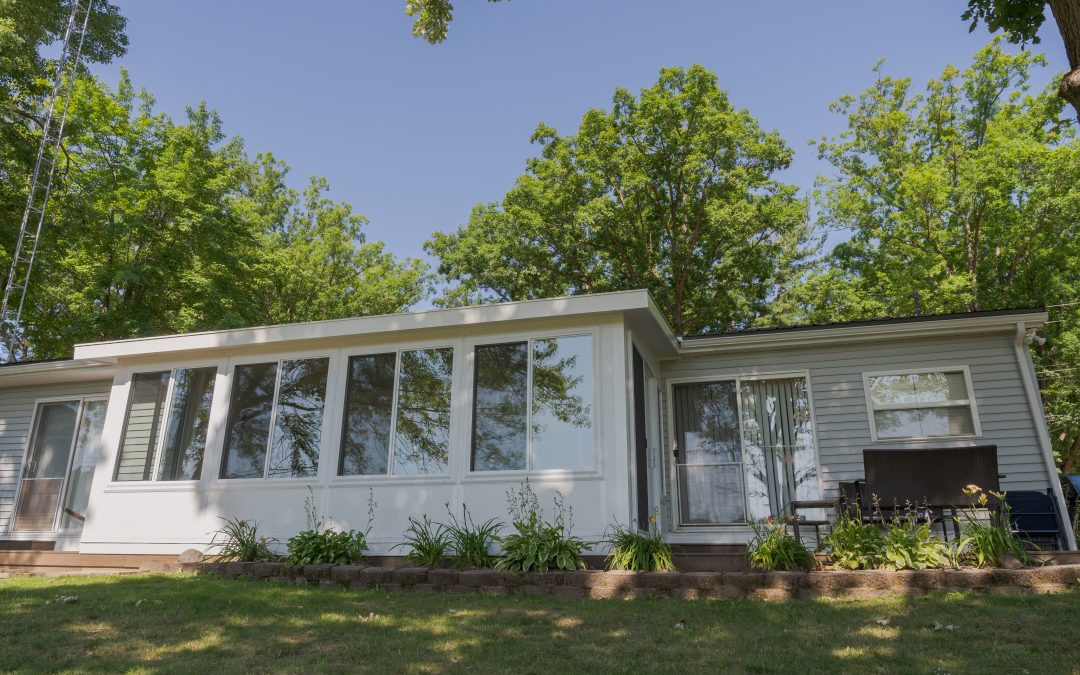Sunrooms are a beautiful addition to any home, offering natural light and expansive views. However, due to their open layout and large windows, they can occasionally attract more bugs, especially during the warmer months when insects are most active. While this is a common challenge, there are simple ways to keep your sunroom just as enjoyable, free from pests, and perfect for relaxation.
Why Do Sunrooms Attract Bugs?
Lighting
Sunrooms are filled with abundant natural light, which creates a bright, inviting atmosphere. However, the ample natural light in sunrooms can be a little too inviting and sometimes welcome insects like moths, flies, and mosquitoes, especially in the evening when the interior lights are on. Insects, particularly moths and mosquitoes, are naturally drawn to light sources that emit ultraviolet (UV) rays. Their eyes are more sensitive to these wavelengths, which are typically found in white or blue-toned lights. By understanding how bugs perceive light, you can make simple changes to reduce their attraction and keep your sunroom a peaceful retreat.
White lights, for example, have a broader spectrum that includes more blue light, which insects find especially appealing. This is because many insects use the moon’s blue-toned light for navigation, and artificial lights with similar wavelengths can unintentionally guide them toward your sunroom. In addition, insects tend to be more active in the evening, and with your interior lights on, your sunroom can become a beacon for bugs.
To help keep your sunroom peaceful and bug-free, consider opting for warmer-toned lighting. These lights emit less UV and blue light, making your space less inviting to insects. Additionally, installing window films or shades that block UV rays can significantly reduce bug activity, allowing you to enjoy your sunroom comfortably without a pest problem.
Outdoor Access
Although it may seem obvious, open windows and doors provide an easy entry point for insects, just like any other room in your home. From improper seals to screendoors that are left open just a crack, unsealed areas can increase the likelihood of bugs entering your sunroom. Sometimes tending to the smallest gaps or cracks can mean all the difference.
To keep insects out while maintaining airflow, consider installing screens on windows and doors. Retractable screen options can provide added flexibility, allowing you to enjoy fresh air without worrying about pests. Regularly inspecting doors, windows, and the foundation for gaps can help you catch potential entry points early. If needed, simple preventative measures like weatherstripping or caulking can effectively seal any openings, eliminating any entrances for pests.
Vegetation
Some plants naturally attract more insects than others, which can pose a challenge for plant enthusiasts who’ve filled their sunrooms with lush greenery. The warm, and sometimes humid, environment of a sunroom, paired with the thriving plants, creates an inviting space for insects like gnats, spiders, and ants. However, with a few simple strategies, you can keep your sunroom a pest-free sanctuary while still enjoying your vibrant plants.
To deter bugs away without sacrificing your greenery, consider pest-resistant plants like lavender, marigolds, or citronella. Essential oils are another great way to embrace a holistic feel in your sunroom with natural remedies. A few common essential oils scents known for insect-repelling properties include tea tree, lavender, pine, eucalyptus, peppermint, and lemongrass.
Bugs are inevitable throughout any part of your home, especially in your sunroom. After all, the comfort of a sunroom is unmatched! By incorporating a few of these tips, you can help keep pests under control and enjoy your sunroom as it was intended. If you’re still in the planning stages, The Sunroom Factory experts can help you navigate any concerns you may have and design a sunroom that meets your needs.


Recent Comments